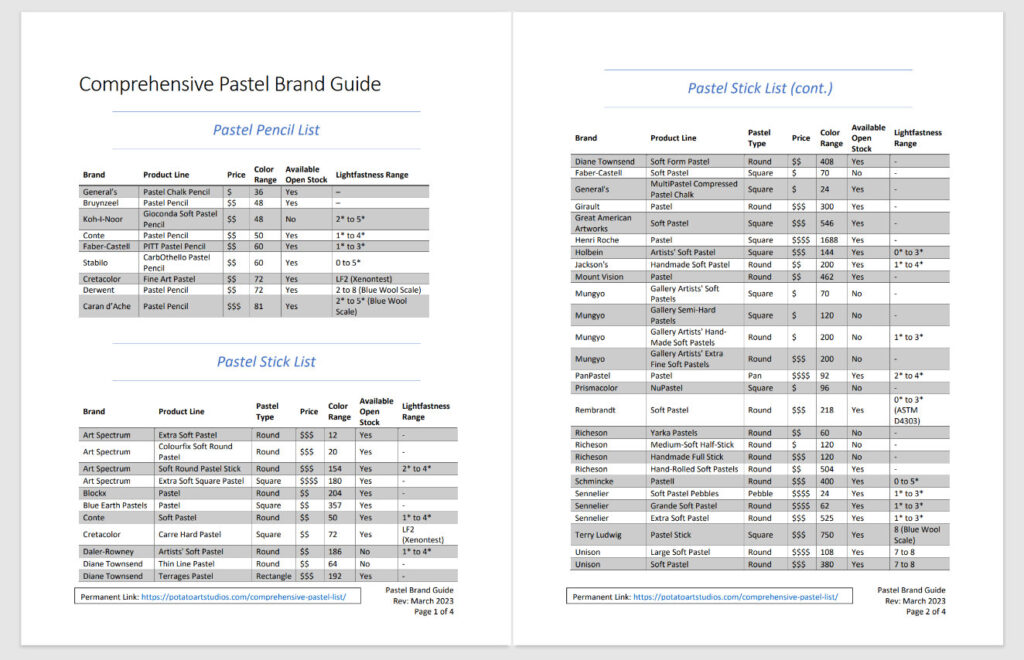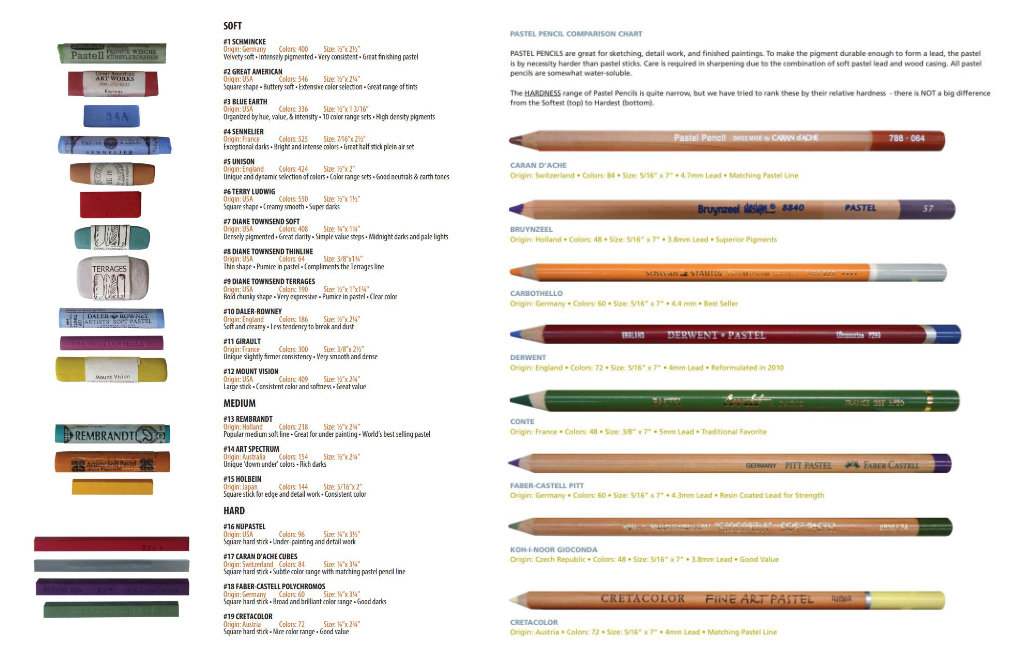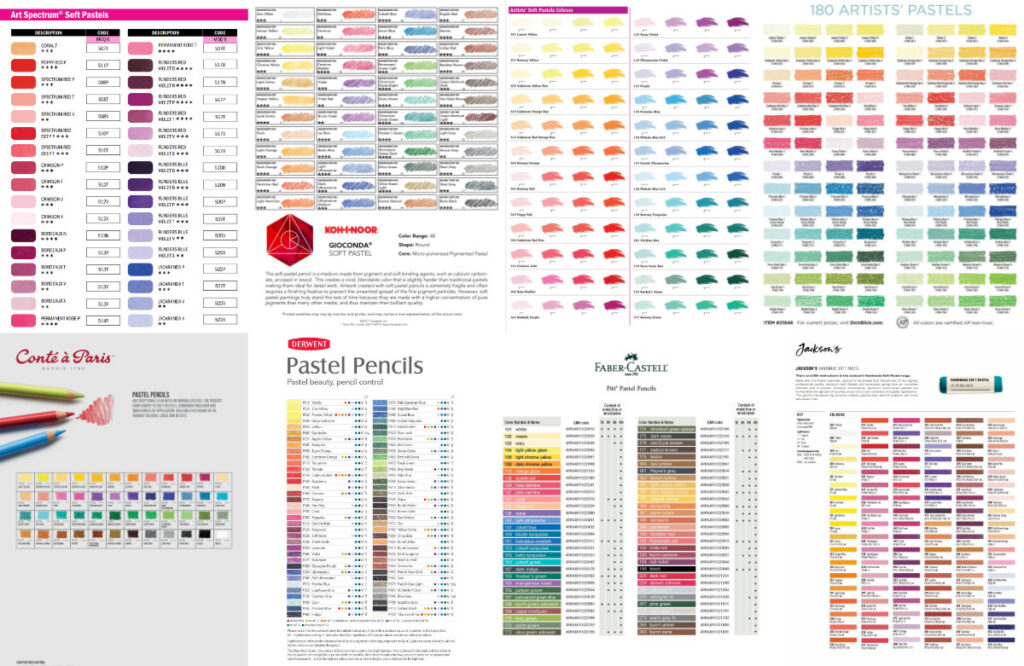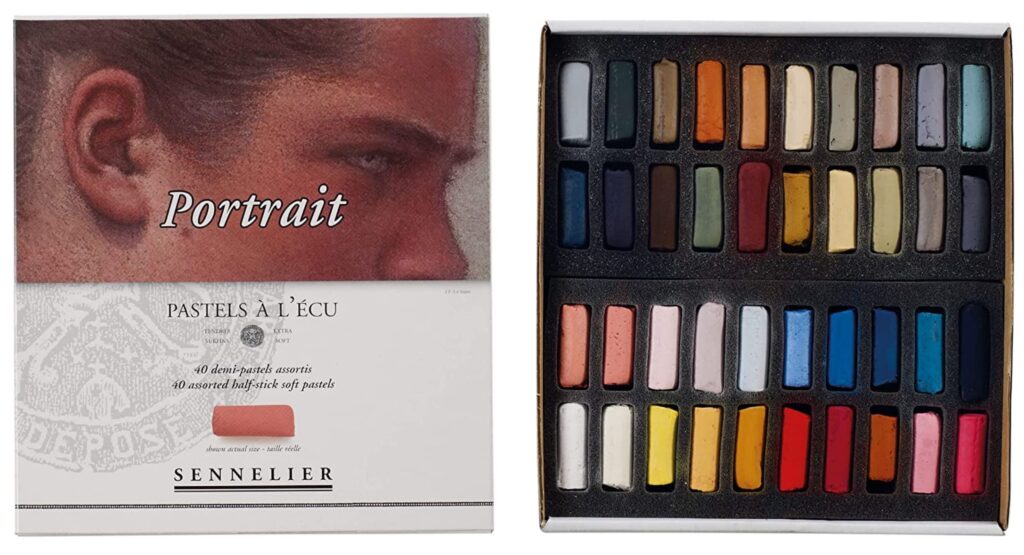Before I continue my journey with portrait drawing, I wanted to take a moment to recap the rabbit hole I found myself in while building the pastel database.
After literal days spent pouring over product sheets…the one question you might be wondering is…why bother?
Well, it’s a very simple and selfish answer. I wanted to know what pastels were out there and there was no resource that had this information in an accessible format. So, I decided to do it myself!

Of course, I need to credit Dakota Pastels for pointing me in the right direction. They are a company based in Washington, U.S.A specializing in selling pastels. However their pastel stick firmness chart and pastel pencil list (which I recommend every pastellist download as references), was out of date by a few years and was not as comprehensive as I would have liked. So even though they were a good jumping off point, I did have to search through each manufacturer’s website to find the most recent product information.

One decision I was firm on in the research stage was taking notes of lightfastness. I’m a big proponent of lightfastness (the property which describes a color’s resistance to fading). This spec was surprisingly difficult to obtain because it was often only mentioned in the product’s color sheet. This led me to another journey of tracking down product information and I was met with endless frustration. Many companies said their products were lightfast but had zero documentation to back up their claims. And to top everything off, the common lightfastness standard for textiles in Europe (Blue Wool Scale) is different from the American Society of Testing and Materials (ASTM), where there are currently three different ASTM documents (ASTM D4303, D6901, and D8330) pertaining to color and fading with exposure to light.
The compromise I made regarding lightfastness was to manually download every spec sheet I could find and note the lightfast range of each product line. When (and if) the testing methods were disclosed, I included the information in parenthesis. I acknowledge that this is not the ideal situation, but manufacturers are not incentivized to perform costly and time-consuming testing. Only a few brands who prioritize the longevity of the artwork made with their products will do this extra step. In a future blog post I do want to dig deeper into the lightfastness realm, but that will have to wait for another day!

Once I had all the data and PDFs, the last step was sorting through all the information I had gathered and asses the most efficient method to present it in a way that was searchable and sortable. The plugin TablePress was incredibly helpful to do just that. I was able to upload spreadsheets directly into WordPress, which saved me hours of work. And although the tables are difficult to read on mobile compared to a larger tablet or computer screen, I believe this is one of the most user-friendly ways to present the volume of information.
If you were to ask me, the best part of making the big list of pastel brands was not the moment I published the page on my website, but the messages from the pastel community when I shared my site online. I’m active on several pastel forums and remarkably every comment I received was overwhelmingly positive. After just a few days of the page going live, it’s already hit several hundred views. I already have a list of more brands to include from the feedback of generous artists who have read through my tables.
It has been nearly 5 years since I first bought my set of ‘fancy’ pastels (if you’re curious it’s the Sennelier 40 half-stick portrait set), but I still recall how difficult it was to click on the purchase button at checkout. At the time, I was only aware of a few pastel brands and the process of picking what to buy was time-consuming and stressful.

My wish is for pastels to become a more popular medium. I am fully aware that pastels are not in the first three or even ten art mediums an average person would list. This is apparent in the number of brands that have downsized their pastel color range or discontinued entire product lines in the last two decades.
In order to make pastels mainstream, there needs to be accessible and free resources for new artists to learn about this wonderful field. My pastel chart may not be the first result that shows up in a search engine, but I hope it becomes a useful reference for artists just starting pastels and experienced artists looking to fill out their pastel collection.
If you haven’t checked out my pastel brand list, I encourage you to give it a look. Many hours of love (and a few headaches) were spent to make this page possible. Share it with any artist in your life – even if they aren’t keen on pastels. You might convert them after they see how many wonderful colors are available!
And if you spot an error or have updated information about any of the products I have listed, use the Contact Form to let me know! I’ll be doing my best to keep the database up to date. But it will only be possible with crowd-sourced information from artists like yourself.
-Lauren
Thank you for posting. It’s great to have a resource for pastel pencils and sticks in one place.
You mentioned the Sennelier 40-count half-stick pastels. I tried the landscape color version and found them extremely soft, which I like, but also extremely fragile. Dropping a stick left it in small powdery pieces on the floor.
Thanks for taking the time to read Rhonda! I agree with you that Sennelier’s pastels are very fragile. I’ve unfortunately dropped a few over the years too. I hope you find new brands to try. 🙂